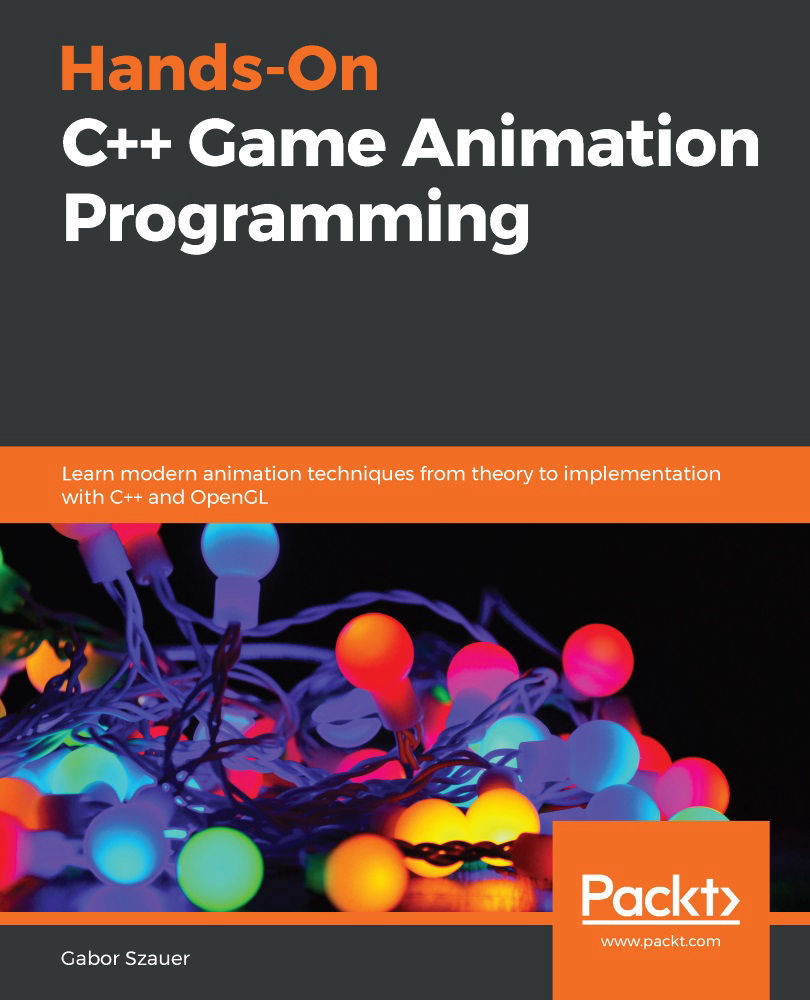Understanding skinning
Skinning is the process of specifying which vertex should be deformed by which bone. One vertex can be influenced by multiple bones. Rigid skinning refers to associating each vertex with exactly one bone. Smooth skinning associates vertices with multiple bones.
Typically, the vertex-to-bone mapping is done per vertex. This means each vertex knows which bones it belongs to. Some file formats, store this relationship in reverse, where each bone contains a list of vertices it affects. Both approaches are valid; throughout the rest of this book, the mapping is done per vertex.
To (rigid) skin a mesh, assign each vertex to a bone. To assign a joint to a vertex in code, add a new attribute to each vertex. This attribute is just an integer that holds the index of the bone that deforms the vertex. In the following figure, all the triangles that should be assigned to the lower-left arm bone are colored darker than the rest of the mesh:
Figure...







































































